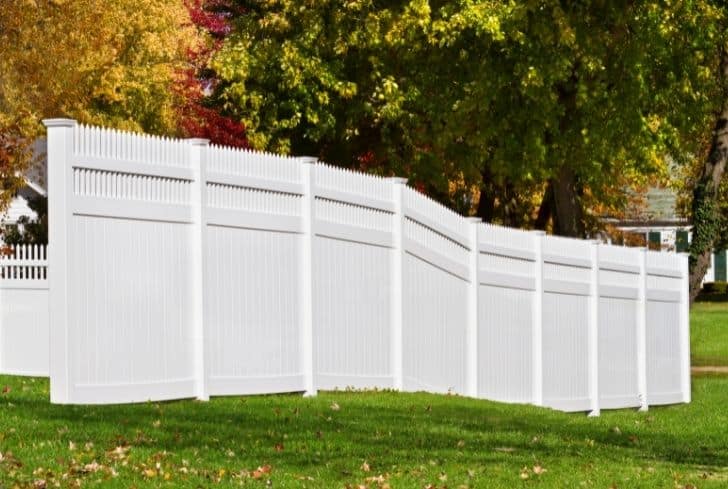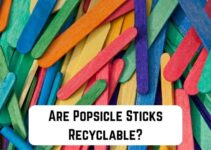Vinyl fencing is a very popular and highly sought-after building material. It is both aesthetically appealing and functional, which is every homeowner’s or property owner’s dream. It is also fortified with additives that make it strong enough to withstand the intensity of the sun and harsh weather conditions, so you can see why many people opt for it.
It is made from plastic, but a solid type of plastic. Well, if you have recently installed a vinyl fence, you may have some leftovers. Or, if you have replaced a worn-out part of your fence, you may be looking to dispose of the old one.
Disposing items is something most people tend to avoid because it can be pretty stressful, especially when you begin to wonder if you can recycle it or just toss it in the bin.
Well, this blog post intends to answer all your questions and more about vinyl fencing recycling and alternative methods to dispose of it. Of course, these methods will be environmentally friendly, as our ultimate aim is to protect our environment. Dive right in!
Can You Recycle Vinyl Fencing?
If your go-to method of waste disposal is the recycling bin, we applaud you. We also assure you that your conscious decision to dispose of your waste correctly goes a long way in saving the environment. Now, you may be wondering if you can recycle your vinyl fencing just like your other recyclable materials. Well, we will answer your question shortly.
Numerous people forget because vinyl fencing is usually sturdy, that it is made from plastic. It may come as a shock to you that your vinyl fencing is basically fortified plastic, but it really is. It is plastic with numerous additives that make it strong enough to perform its functions.
Now, most recycling centers do not have an issue with recycling vinyl fencing. They will, however, have to sort through it and recycle it separately. It is pretty costly to recycle, though, so some of them may refrain from accepting it.
You may be lucky enough that your recycling center accepts vinyl. But to save yourself time and energy, you may want to call first to find out if they accept it. If they do not, then you still have a few options to resort to.
Some companies specialize in recycling vinyl or plastic items. Of course, they will happily take your vinyl fencing off your hands. You can look them up on your computer; they will undoubtedly be easy to find. Some of them offer to pick it up for a relatively affordable price, and you may also opt to drop it off yourself.
Additionally, some vinyl fencing manufacturers leave you with the option of sending it back when you need to dispose of it. They make provisions for recycling these materials and using them to create a new set of vinyl fencing. So, if your vinyl fencing manufacturer does not already offer this service, you may want to look out for one that does.
Now, there is a condition attached to recycling vinyl fencing. If it is made from a high content of PVC, then you may find it a bit difficult to find a recycling center that accepts it. You will, in most cases, not even find one.
PVC is a challenging material to recycle, as it cannot appear in an excessive amount without destroying the rest of the materials being recycled. So, most of the time, it leads to a waste of time and resources.
If you intend to avoid this pickle, you may want to go for vinyl fencing with a low PVC content.
Is Vinyl Fencing Bad For the Environment?
In this context, a material that is bad for the environment depletes the renewable and non-renewable resources, requires a lot of processing, chemicals, and so on in its manufacturing process. You may be wondering if vinyl fencing is terrible for the environment, and we will answer your question shortly.
Vinyl fencing is made from polyvinyl chloride, a type of plastic that is sturdy enough to resist harsh weather conditions. It requires little to no maintenance, as it can remain intact for years. It sure has a longer lifespan than other fencing materials like wood.
Additionally, vinyl fencing does not need to be painted often. You certainly do not need to oil it either, as it is made from plastic and is not susceptible to rust. It does not require chemicals to prevent insects from infesting it, unlike its wooden counterparts.
Now, you may be wondering what exactly makes it environmentally friendly. Well, for one, you don’t need chemicals to maintain it. Chemicals are harmful to you and the environment. You will eventually come in contact with your fence, and you certainly do not want something that can be disastrous to your health.
The fewer chemicals we use, the safer our environment. Enough and consistent water pressure is enough to wash off the chemicals, and the ground is readily available to absorb them. This isn’t good for the environment, as it can destroy the soil and plants. You also need less paint to maintain its white color as it early fades. That is just another chemical you are saving the environment from.
Another reason vinyl fencing is environmentally friendly is that it has a long lifespan. You do not need to replace it as often as you would other household materials. It can last as long as 20 to 30 years, and in the process, save a ton of building materials.
Vinyl fencing is also recyclable, so manufacturers do not have to resort to producing more plastic. Instead, they can simply recycle old vinyl fencing and make new ones out of it. The process of producing plastics is a long one, and it takes up a lot of human, renewable and non-renewable resources. That a family can use a set for twenty to thirty years certainly saves a lot of resources.
Lastly, if you leave vinyl fencing lying around, you do not have to worry about releasing harmful toxins into the environment. Aside from its plastic component, it has little to no chemicals in it, and as such, cannot wreak havoc on the environment. However, it may end up lying in landfills for decades, so do endeavor to dispose of it properly.
Can You Paint Vinyl Fencing?
Your vinyl fencing may have recently acquired a stain, or you may be dissatisfied with the white color it originally comes in. Of course, you do not need to paint vinyl fencing as often as you need to paint a wooden fence. But occasions may arise that will lead you to wonder if you can paint your vinyl fencing.
Well, you certainly can paint your vinyl fencing. However, you will have to carefully select paint and primer that the fencing will absorb. Vinyl fencing is made from plastic, which is not porous. This may make it a bit difficult for you to paint it, but it is not impossible.
When you go to pick up the paint and primer you will use for the fencing, be sure to ask if they will be suitable for vinyl fencing. Finding a good pair will be a walk in the park, as there are various paints and primers for various materials.
Is Vinyl Fencing Cheaper Than Wood?
Wood fencing is cheaper than vinyl fencing for several reasons. For one, it is made from trees which are renewable resources. Another is that it does not require a rigorous manufacturing process, unlike vinyl fencing.
However, when you buy vinyl fencing, you can be assured that you will not have to spend any extra dime on maintaining it. You will also not have to worry about changing your fence for another 30 years. On the other hand, Wooden fences have a life span of about half of the life span of vinyl fencing.
In addition, you will have to spend a substantial amount yearly to maintain a wooden fence. You will have to treat it for insect infestations, paint it when the paint wears off and even replace it when it becomes weak from harsh weather conditions. So, in the long run, you may end up spending even more on maintaining a wooden fence.
What Can I Do With My Old Vinyl Fence?
Aside from recycling, you may opt to repurpose your old vinyl fence. It certainly is a better option than throwing it in the refuse bin, and that is even if you can. We have a few tips for you to dispose of your vinyl fence in an interesting and environmentally friendly manner.
1. Plant Marker
If you are a bit of a green thumb, then the chances are that you will be on the lookout for tips that will help beautify your garden. Well, here’s one. You can saw your old vinyl fence into sizes and use them to label your plants. They give off a rustic and aesthetically appealing feel.
The best part is that you can paint it any color your want and use felt tips to write the name of the plants you want to label.
2. Vintage Nursery
We bet you didn’t know that you can fashion a cradle from your old vinyl fence. Well, now you do! If you have a baby on the way or a friend who has a baby on the way, you can employ a handyman to help you fashion a vintage cradle. We recommend a professional to handle this task because of maximum safety.
You can also place parts of the vinyl fence at systematic positions of the room. You may choose to attach artificial flowers, butterflies and other designs to it to beautify it. Painting is also an option.
3. Sign Posts
If you would like a signpost that indicates your home address, then you can saw a sizable portion of your vinyl fence, paint it if you want and stencil your home address on it. It will prove helpful in that it will make it easy for your first-time visitors to find where you live. Mail carriers and delivery men will also appreciate it, as they will find it easy to locate you.
4. Christmas Decorations
Now, this is an excellent hack for you if you are a fan of festive periods. You can cut your old vinyl fence into shapes like stars, Christmas trees, and even sleds if you have an artistic edge. Then, paint them festive colors, and you have just saved money you would have otherwise spent on Christmas ornaments.
Conclusion
There are several ways you can dispose of your vinyl fence without harming the environment. We have provided you with a few of them, with recycling as the ultimate one. So kindly read up and stay informed.
References:
http://www.jdhdecksandfences.com/keep-your-family-safe-and-secure-with-vinyl-fencing/
https://www.outdooressentialproducts.com/en/Projects/Can-Vinyl-Fence-Be-Painted






